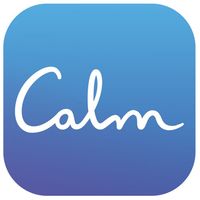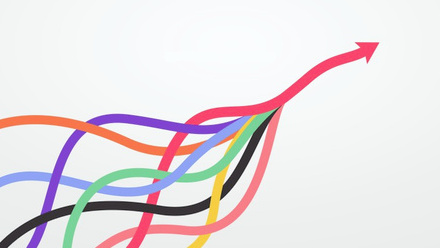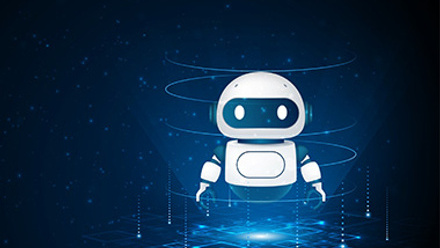How to prevent technology from contributing to burnout
As leaders rush to embrace technology to unlock efficiencies and growth, they could undermine their efforts if they fail to focus on the impact to employees, Calm research suggests.
According to Calm’s Voice of the Workplace Report, based on a survey of 4,000+ workers in the UK, Germany and India, technology is creating employee stress.
Artificial intelligence (AI) is only part of the story.
If leaders want to retain talent, improve the customer experience, and enhance product and service innovation, they should support employee well-being related to the use of AI and standard workplace productivity technology such as messaging and project management tools.
Nearly half of employees feel threatened by the emergence of AI
Amazon, IBM, UPS and Cisco are just a few of the many companies planning to replace roles with AI or already laying off employees to take advantage of AI-driven opportunities.
As the list of companies rapidly adopting AI grows, it’s not surprising that many employees are worried.
Calm’s research found that 45% of employees worry that AI will take over their jobs, and 53% have experienced anxiousness or nervousness due to the rapid pace of technology developments, including AI, in their workplace.
Gen Zers are the most anxious about the rapid pace of technology change in the workplace, with 35% saying it makes them anxious frequently.
Only 22% of millennials, 12% of Gen Xers, and 8% of boomers feel that way.
Workplace technologies are also a big source of employee stress
But it’s not all about AI.
Everyday workplace productivity technologies also contribute to employee stress and burnout, Calm research shows.
In response to the pandemic, organisations deployed the latest collaboration tools, project management software, and messaging and video apps to ensure employees could work efficiently and effectively from any location.
But instant access to work from anywhere also can blur work-life boundaries and contribute to employee stress and burnout.
While cloud technologies make it simple for everyone to connect to work, they also make it hard for many to disconnect.
Employees often feel pressure to be “always on” and to respond in the moment, both during and outside work hours, whether or not they’re expected to do so.
According to Calm’s 2024 Voice of the Workplace Report:
- 58% of employees agree that they’re always connected or available for work
- 46% of employees often work outside working hours
- 1 in 3 workers are often interrupted by their devices while they’re at work
- 32% feel tired from being online for work
In fact, “being overworked” is a top stressor negatively affecting employee mental health, and always-on technology is a factor.
In our survey, a quarter of workers said they feel that work is overtaking their personal life.
Working too much can lead to a wide range of problems
Working too much, or chronic stress from feeling pressure to work all the time, can lead to a wide range of issues, including burnout.
Stress and burnout specialist Chibs Okereke describes burnout as overwhelming exhaustion, a lack of enthusiasm, increased negativity about one’s job and less ability to perform it due in part to cognitive impairment.
Anxiety, headaches, heart disease, stroke, type 2 diabetes, and neck or back pain represent just some of the health challenges that can result from stress and overwork.
How you can help relieve the technology-induced stress and anxiousness
Here are five ideas to help relieve employee stress and anxiousness related to always-on technology and the emergence of AI.
For additional ideas to address overwork, download Workforce Wellbeing Checklist: 5 Tips for Establishing Healthy Workloads.
1. Establish goals and guidelines for wellbeing
Create technology-use guidelines to help protect employee mental health and wellbeing by:
- Turning off app notifications at the end of each workday and on the weekends
- Adopting “core hours” and taking micro-breaks throughout the day
- Allowing employees to decline meetings where appropriate
Using vacation/PTO hours within certain timeframes and ensuring managers protect employees’ time off with proactive hand-offs/capacity planning
2. Model healthy behaviours
Encourage managers to help set the tone and expectations by modelling healthy behaviours and boundaries and sharing their personal best practices with their teams.
- Integrate mental health breaks during the workday
- Carve out time for getting some movement
- Establish clear boundaries between work and home
- Take time off and protect that time
3. Measure wellbeing
Find out how employees are feeling and assess whether or not the organisation as a whole is following through on its values and commitments to workforce wellbeing.
Consider:
- Implementing quarterly pulse surveys and including questions about workloads and work-life balance. Are they taking micro-breaks and using PTO?
- Communicate about what you’ve learned and how you’ll address challenges.
- Consider implementing tools like Calm Business that help you gauge how employees are feeling on an ongoing basis.
- Hold managers accountable for checking-in with employees on a monthly basis to talk about workloads, balance, and overall well-being, not just output.
4. Be open about AI
Impress upon leaders the importance of communicating proactively about AI and why, when and how the organisation intends to adopt it.
Be clear about the anticipated impact of AI at your workplace as well as the opportunities it presents so that employees aren’t caught off guard and can make informed decisions about their futures.
5. Help employees manage stress and anxiousness in the moment
Supplement your employee assistance program (EAP) with preventive resources to support employees struggling with stress, anxiousness and trouble sleeping.
More than 75% of employers offer EAP services, but only about 25% of employees are aware they have these benefits.
Calm breathing exercises, soundscapes, Sleep Stories, meditations, and music are easily integrated into daily routines to help mitigate stress, anxiousness, insomnia, and other challenges affecting mental health and well-being.
Technology is continuously transforming the modern workplace, but organisations won’t advance their strategic goals if their people aren’t feeling their best.
Make employee wellbeing a top priority and help them use technologies in healthy ways.
Supplied by REBA Associate Member, Calm
Calm offers workplace and healthcare solutions delivering consumer-friendly mental health support.








